Machine gun weapons from opponents and allies during World War II
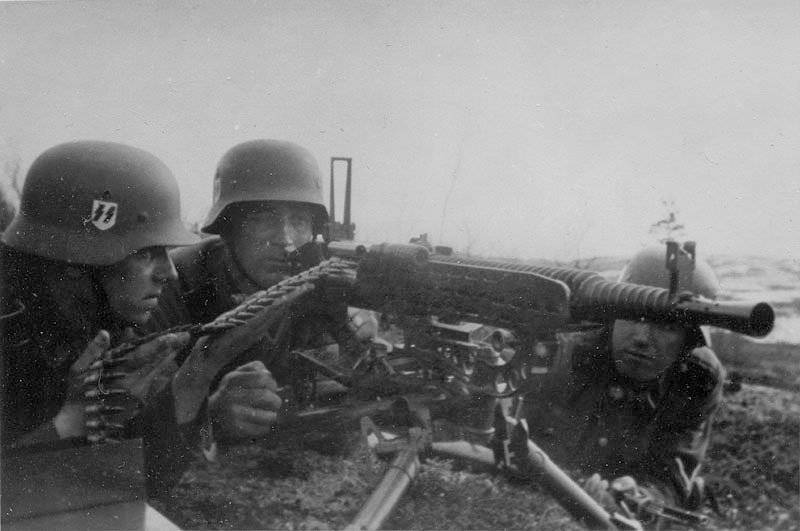
The German army preferred to use 1930-millimeter cannon as a light air defense weapon since 20.
Only in the period from December 1941 to February 1942 of the year (defeat near Moscow) on the Eastern front, the Wehrmacht lost 11,1 thousand machine guns. Not surprisingly, since 42, in Germany, as well as in the USSR, they decided to “not pay attention to the appearance of the finished product” to reduce the cost and speed up production, taking into account the much lower service life of products. The use of mass production technologies has expanded in the arms industry. In the manufacture of lightly loaded parts used cheap plastics and alloys. But despite this the needs of the front could not be covered.
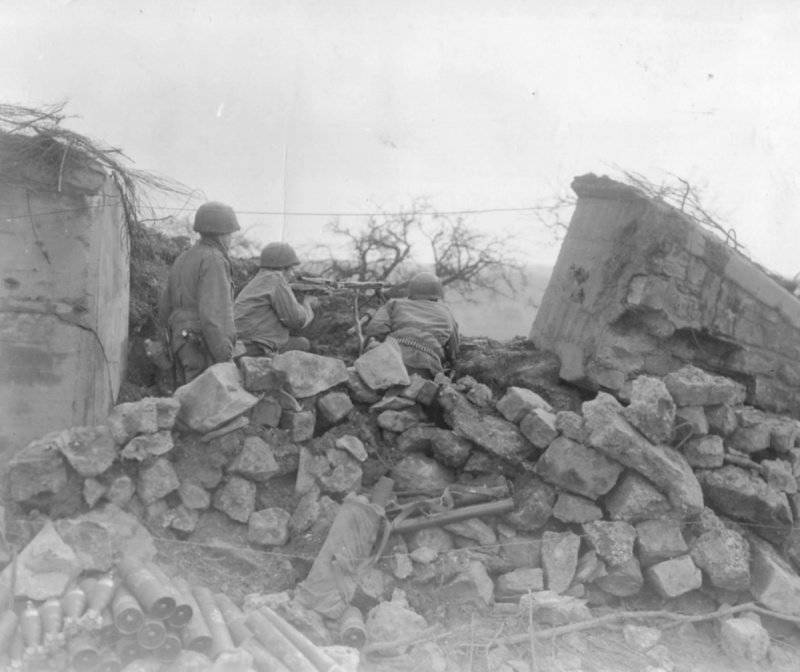
The release of machine guns in Germany and the USSR can be compared in the first half of 1943 of the year:
January - 37800 in the USSR and 15600 in Germany;
February - 38000 and 14700
March - 38700 and 19600;
April - 39700 and 16500;
May - 39700 and 17800;
June - 42100 and 21600.
I had to use outdated samples and captured weapons. True, they tried to transfer obsolete samples to the reserve and rear units, and in the last months of the war to Volkssturm. Converted to the infantry at the same time aviation machine guns.
In 1942, a single MG.42 was accepted into service, which was recognized as the best machine gun of World War II in terms of production, economic, service, operational and combat characteristics. The release of machine guns has increased dramatically, and in 43, it was 224,8% of 42 of the year. A great contribution to such a sharp increase was made by the use of the resource of the occupied countries.
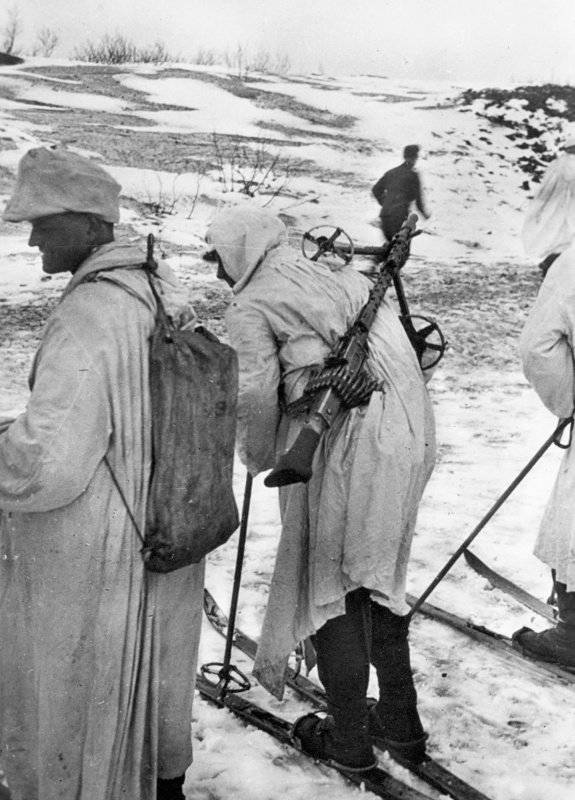
If in the infantry battalion at the beginning of the war there was a machine-gun company, then in accordance with the principle of decentralization in 1943, heavy weapons with machine guns were introduced into infantry companies. Also in the German army sought to reduce the number of personnel, while increasing the power of automatic fire. In the last period of the Second World Wehrmacht with respect to large-caliber machine guns, it turned out to be in a position in which the Red Army was at its beginning — a catastrophic shortage of anti-aircraft weapons in the infantry (under enemy air superiority). Improvisations like the transfer of large-caliber aviation machine guns into infantry did not solve the problem.
The “infantry weapons program” adopted at the beginning of 44 of the year was intended to bring the monthly production of machine guns to 30 thousand units. Even despite the loss of production capacity, the level of production of small arms and artillery weapons still remained high. In the period from October 44 to February 45, the time of maximum production, the 144621 machine gun was launched (the monthly output reached 31 thousand). This was facilitated by a decrease in metal intensity of production and available reserves, but in the second half of 44, steel production fell by 40%, and this production take-off was the last. At the same time, the Wehrmacht lost 55,7% of the release (80521 machine gun), 4,6% (6704) was transferred to other troops.
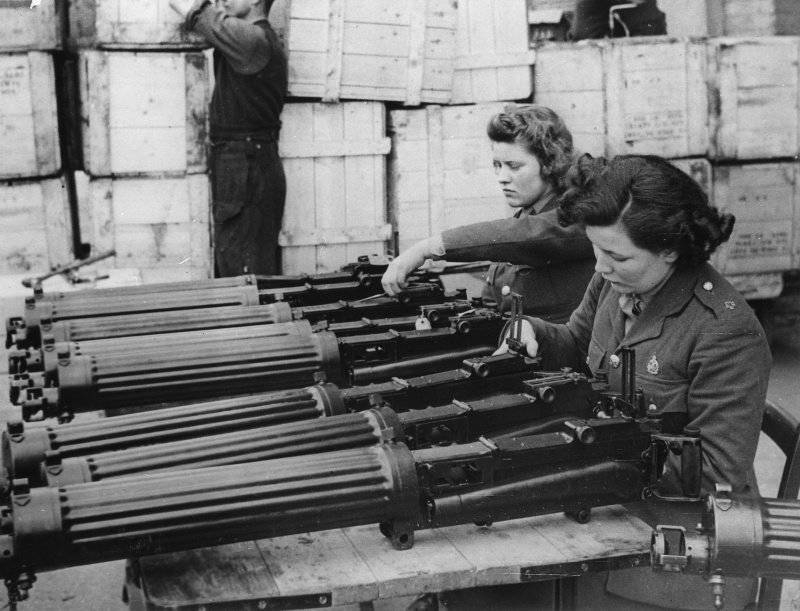
Changing the personnel of the infantry division and its saturation with automatic weapons in different periods of the war:
personnel: April 1941 of the year - 16859 people, December 1941 of the year - 14742 people, December 1944 of the year - 12801 people;
total number of submachine guns and machine guns: April 1941 of the year - 767 (45,5 per 1000 people), December 1941 of the year - 705 (47,8), December 1944 of the year - 1595 (124,6);
The total number of light machine guns in the same periods: 495 (29,4), 454 (30,8), 614 (48);
The total number of machine guns in the same periods: 118 (7), 112 (7,6), 102 (8).
Wehrmacht left its machine guns and nationalists for the "guerrilla" war. The NKVD organs only in May 1944 of the year, during the operation to evict the Crimean Tatars, seized 622 machine guns. For many years, the machine guns left by the Germans "fought" in the gangs of nationalists in the Baltic States and in Western Ukraine. However, the allies in the 45 year were not in a hurry to dispose of these machine guns, intending to "return" them to the German units, if necessary, "to resist the Soviets together." Machine guns of the Second World War, one way or another, continued their military service after the end of the war.
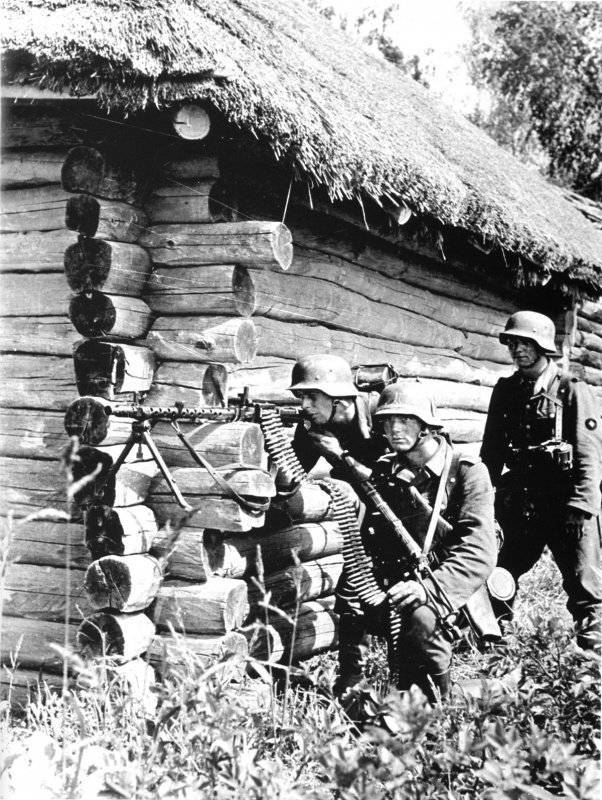
The German army in different periods of World War II consisted of the following number of machine guns: 01.09.1939 of the year - 126800, 01.04.1940 of the year - 147700, 01.06.1941 of the year - 203250, 01.02.1942 of the year - 208500, 01.10.1944 of the year - 211000.
The US Army also quickly increased saturation with machine guns. By the beginning of the war, the Americans did not manage to develop a modern system of armaments for the ground forces, and to accumulate its reserves. If during the war, the machine gun system has improved slightly, with the production volumes the situation has changed dramatically. The US arms industry was ready to equip the emerging mass army. She did not experience difficulties with capacity, labor and raw materials, so she was able to quickly catch up. If the US infantry division in August 1942 had 280 machine guns per person 14253, then a year later the figure was already 636 machine guns (about 45 per 1000 people). On the 1943 year, the US Army Infantry Battalion on the 871 man had 33 light and 8 heavy machine guns, an air defense battalion of the infantry division - 36 heavy machine gun. True, the UK Infantry Division on the 18347 man had a 1262 machine gun (69 on the 1000 man): Britain used the possibilities of dominions, metropolises, colonies, as well as significant assistance from the United States. The growing military production of the United States has already made it possible to provide weapons, including machine guns, the troops of France, China and others.
Average monthly production of machine guns in various countries:
1940 year: USA - 50, United Kingdom - 2500, Germany - 4400;
1941 year: USA - 1500, United Kingdom - 3300, Germany - 7700;
1942 year: USA - 22000, United Kingdom - 5700, Germany - 7100;
1943 year: USA - 24800, United Kingdom - 6700, Germany - 14100;
1944 year: United States - 21200, United Kingdom - 4400, Germany - 24200.
Information